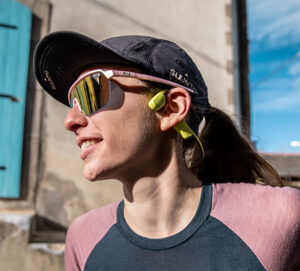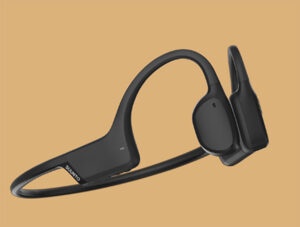
Image courtesy of Suunto
In October 2023, Suunto made its first foray into the headphone market with the launch of the bone-conduction Suunto Wing wearable. Today, it has launched a lighter and slimmer followup to the Wing known as the Suunto Sonic.
The Suunto Sonic headphones weigh just 31 grams, and offer 10 hours of battery life with IP55 water resistance to sweat and light rain. They also offer a dual microphone and cVC noise reduction, as well as increased bass. Unlike the Wing, the Sonic doesn’t have the LED lights on it that increase a user’s safety in low-light conditions. Coming in at $149 (which is $50 less than the Wing), the Sonic is marketed as a more budget-friendly option, while still solidly delivering on sound quality.

Image courtesy of Suunto
Yet, as with any type of open-ear bone-conduction technology, that quality has never matched more traditional in-ear buds or headphones. Bone conduction works by transmitting sound vibrations through the bones of the skull, directly to the inner ear, rather than through the eardrums as traditional headphones do. The perks of this kind of device include the user being able to remain aware of their environment — able to hear animal sounds, vehicular traffic, or other athletes. It can also bypass certain types of hearing problems, such as conductive hearing loss, and provide a way to perceive sound without relying on the eardrum.
For many runners in urban environments, bone-conduction headphones are increasingly popular. And some race series such as Ragnar Relays require that, if a runner chooses to wear headphones, they have to be open-ear bone-conduction ones.

Image courtesy of Suunto
The Suunto Sonic, which are available in black or lime, not only come with up to 10 hours of battery life with one charge, but they can be fully charged in 60 minutes. And it takes just a quick 10-minute recharge to keep the audio going for another three hours.
Users can manage calls and control music on these headphones, and it all connects via Bluetooth to the Suunto app. There, it’s also possible to change your preferred sound mode or switch the dual device connection off.
This foray into new types of wearable tech started coming barely a year after Suunto was purchased by Liesheng, a Chinese company with a major focus in the wearable electronics segment. While some newer products (including the much-celebrated Suunto Race AMOLED-display sport watch) are being manufactured in China, Suunto’s headquarters remain in Vantaa, Finland.
 Your Privacy Choices
Your Privacy Choices
 The
The